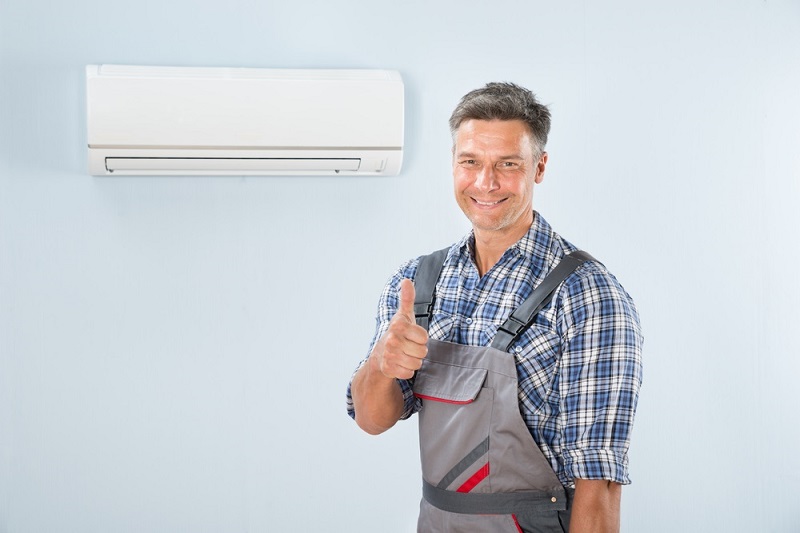Ultimate Guide to VRV Air Conditioning Systems

VRV air conditioning systems represent the pinnacle of modern climate control technology, offering unmatched efficiency, customization, and sustainability for commercial and residential spaces. This definitive guide unpacks everything you need to know—from core mechanics to real-world benefits—helping you decide if it’s the right investment for your property.
How VRV Technology Revolutionizes Climate Control
Unlike traditional HVAC units, VRV air conditioning systems (Variable Refrigerant Volume) use a single outdoor unit connected to multiple indoor units via refrigerant piping. This setup enables:
- Precision zoning: Each indoor unit operates independently, allowing different temperatures in individual rooms (e.g., cooling a server room while heating an office).
- Heat recovery: Excess heat from cooling zones is redirected to areas needing warmth, slashing energy waste.
- Inverter-driven compressors: Adjust refrigerant flow based on real-time demand, avoiding the energy spikes of conventional on/off systems.
A hotel in Sydney reduced its energy bills by 35% after switching to VRV, citing silent operation and guest comfort as game-changers.
VRV vs. VRF vs. Traditional Systems: Key Differences
| Feature | Traditional HVAC | VRV/VRF Systems |
| Energy Efficiency | Low (fixed-speed compressors) | High (30–40% savings) |
| Zoning Flexibility | Limited or none | Room-by-room control |
| Installation Footprint | Bulky ductwork required | Compact piping; no ducts |
| Noise Levels | 50–60 decibels | 25–35 decibels (library-quiet) |
Note: VRV is Daikin’s trademarked term; VRF (Variable Refrigerant Flow) is the generic equivalent. Both use identical technology.
Top 5 Benefits Driving VRV Adoption
1.Energy Savings
By eliminating duct losses and leveraging variable speeds, VRV air conditioning systems consume 20–40% less power. A Melbourne office complex recouped its installation costs within 6 years through electricity savings alone.
2.Hyper-Personalized Comfort
Set unique temperatures, humidity levels, and airflow for each zone via smartphone apps. Ideal for:
- Hospitals (ICU vs. waiting rooms)
- Retail (cooling fitting rooms, heating entrances)
3.Space-Saving Design
Ceiling cassettes, concealed ducted units, and wall mounts free up floor space—critical for heritage buildings or high-rise retrofits.
4.Whisper-Quiet Performance
At 25 dB, indoor units are quieter than rustling leaves, making them perfect for recording studios or bedrooms.
5.Scalability
Expand your system seamlessly. A Brisbane school added 15 new classrooms to its existing VRV setup without replacing the outdoor unit.
Cost Breakdown: Australia-Specific Analysis
- Installation: $150–$250/m² (e.g., $50,000–$100,000 for a 300m² office).
- Operational Savings: 30% lower running costs vs. ducted systems.
- ROI Timeline: 5–10 years for commercial properties.
Pro Tip: Government rebates (e.g., Victoria’s VEEC scheme) can offset 15–20% of upfront costs.
Ideal Applications: Where VRV Excels
- Commercial: Offices, shopping centres (e.g., David Jones uses VRV for per-department control).
- Hospitality: Hotels (guest room customization + energy savings during low occupancy).
- Healthcare: Precision temperature/humidity for labs or patient rooms.
- Luxury Homes: Multi-story residences seeking efficiency without aesthetic compromise.
4 Common Pitfalls to Avoid
- Oversizing Units: Causes short-cycling, reducing dehumidification and efficiency.
- Poor Installation: Untrained technicians lead to refrigerant leaks or airflow issues.
- Neglecting Maintenance: Clogged filters can spike energy use by 15%.
- Ignoring Local Climate: Coastal properties need corrosion-resistant components.
Solution: Always hire installers certified by Daikin, Mitsubishi, or LG.
Sustainability Edge: Eco-Friendly Operation
- Refrigerants: Modern R32 gas has 70% lower global warming potential than older alternatives.
- Carbon Footprint: VRV systems produce 40% fewer emissions than conventional HVAC.
- Solar Compatibility: Pair with rooftop PV panels for near-zero-energy cooling.
Future-Proofing Your Investment
- Smart Integrations: VRV systems now sync with IoT platforms like Google Nest for AI-driven optimization.
- Hydrogen-Ready Models: Brands like Daikin are piloting units powered by green hydrogen (2026 rollout).
- Extended Lifespan: 20+ years with biannual servicing—double traditional systems.
The Verdict: Is VRV Right for You?
VRV air conditioning systems deliver unparalleled efficiency and comfort for properties >500m² or multi-zone spaces. While upfront costs are higher, the ROI through energy savings, tenant satisfaction, and future scalability makes them a savvy long-term investment.
Not Recommended For: Single-room applications (opt for splits) or budgets under $30,000.



